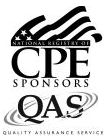Closing the Books (CPE Course)
CPE Credit: 13 hours
Course Type: Downloaded PDF materials with online test
Price (with PDF Textbook): $90
Course Description
Closing the books is one of the key functions of the accounting department. Closing the Books reveals how to do so promptly and accurately, so that financial statements can be issued shortly after the end of the reporting period. The course discusses the entire process of how information is summarized into the financial statements, as well as the many reporting formats that are available. It covers the full range of closing steps, and shows how to fine-tune the closing process to achieve a shorter close. In addition, the course addresses the controls and record keeping needed for the closing process. In short, Closing the Books can be considered a desk reference for anyone who closes the books on a regular basis.
Author: Steven Bragg
Course Number: AC1072
Table of Contents
Chapter 1. The General Ledger and Other Ledgers
Chapter 2. The Trial Balance
Chapter 3. Journal Entries
Chapter 4. The Closing Process
Chapter 5. Fine-Tune the Closing Process
Chapter 6. Closing Cash
Chapter 7. Closing Accounts Receivable
Chapter 8. Closing Inventory
Chapter 9. Closing Fixed Assets
Chapter 10. Closing Accounts Payable
Chapter 11. Closing Payroll
Chapter 12. The Income Statement
Chapter 13. The Balance Sheet
Chapter 14. The Statement of Cash Flows
Chapter 15. The Statement of Retained Earnings
Chapter 16. Financial Statement Disclosures
Chapter 17. Segment Reporting
Chapter 18. Interim Reporting
Chapter 19. Earnings per Share
Chapter 20. The Public Company Close
Chapter 21. Controls for Closing the Books
Chapter 22. Record Keeping
Chapter 23. Soft Close and Virtual Close
Learning Objectives
Identify the types of subsidiary ledgers.
Specify the applications of the different types of trial balances.
Identify the types of journal entries used to modify account balances and record transactions.
Recognize the core and delayed steps used to close the books.
State the methods used to fine-tune the closing process, and which activities do not improve the process.
Identify bank reconciliation terminology, as well as the applicability of petty cash reconciliations.
Identify the situations in which revenue can be recorded, as well as how to rebill expenses.
Identify the methods used to assign costs to inventory and increase the accuracy of inventory records.
Specify the rules related to fixed asset recordation and impairment, along with associated terms.
State how accounts payable are handled and the associated expenses recorded.
Identify the recordation decisions associated with payroll transactions.
State the formats in which the income statement can be presented, and note the source of income statement information.
Recognize the proper classification of line items on the balance sheet, and note how the balance sheet is constructed.
Identify the contents of the statement of cash flows.
Identify the contents of the statement of retained earnings.
Identify the types and contents of disclosures that can accompany the financial statements.
State the criteria used to identify a reporting segment, as well as the required segment reporting.
Identify the decision points associated with the integral and discrete views of interim reporting.
Identify the methods used to calculate the various types of earnings per share.
State the additional steps involved in closing the books of a public company, including the additional types of required approvals.
Recognize the controls that should be imposed on the closing process.
Identify the types of records associated with closing the books that should be stored.
Identify the situations under which a soft close can produce errors, and the benefits of using a virtual close.
Level: Overview
Instructional Method: QAS Self-Study
NASBA Category: Accounting
Prerequisites: None
Advance Preparation: None
Latest Review Date: August 2024
Program Registration Requirements: Click on "Purchase Course" near the top of this page to pay for and access the course. You will then be able to download the course as a PDF file, then take an on-line examination, and then download a certificate of completion if you pass the examination.
Program Refund Policy: For more information regarding administrative policies concerning complaints, refunds, and other matters, see our policies page.
AccountingTools, Inc. is registered with the National Association of State Boards of Accountancy (NASBA) as a sponsor of continuing professional education on the National Registry of CPE Sponsors. State boards of accountancy have the final authority on the acceptance of individual courses for CPE credit. Complaints regarding registered sponsors may be submitted to the National Registry of CPE Sponsors through its website: www.nasbaregistry.org.
The NASBA sponsor identification number for Accountingtools, Inc. is 115881.
AccountingTools is an IRS Approved Continuing Education Provider. We are compliant with the requirements for continuing education providers (as described in sections 10.6 and 10.9 of the Department of Treasury’s Circular No. 230 and in other IRS guidance, forms, and instructions). Our IRS Approved Continuing Education Provider number is 72821.


